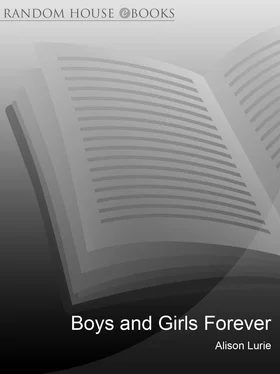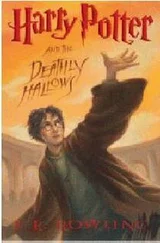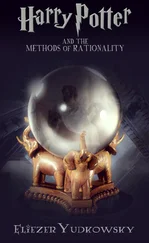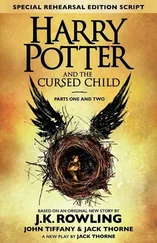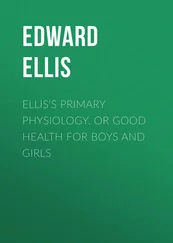The life history Alcott gives Jo in Little Women and its two sequels, Little Men (1871) and Jo’s Boys (1886), is well ahead of its time. In contemporary terms, she has it all: not only a husband and children but two careers; and she doesn’t have to do her own housework and cooking. She gets away with it partly because both her occupations are “women’s work”: running a progressive boarding school and writing for children. 12The message to the reader is clear: demand freedom and independence, and you may very well get it—and love as well.
Perhaps Jo also manages to have it all because she, like Louisa May Alcott, depreciates her literary efforts and excuses them as financially necessary. Even nearly twenty years later, in Jo’s Boys , she speaks of herself as a “literary nursery-maid who provides moral pap for the young.” 13
Louisa May Alcott, like many women writers of her time, put her duty to help support her family above the demands of art, and felt under pressure to write as fast as possible. Of one of her best adult novels, Work (1865), she wrote, “Not what it should be—too many interruptions. Should like to do one book in peace and see if it wouldn’t be good.” 14But although she was supplying her parents with a very comfortable lifestyle and sending her sister to study in Europe, she never allowed herself to “do one book in peace.”
This sort of female self-destruction and self-denigration, perhaps undertaken originally out of lack of confidence, or to deflect criticism, was endemic in the late nineteenth century, and continued long into the twentieth. Possibly as a result, men gave up their exclusive rights to the production of “serious literature” very slowly. Even after they began to allow writing by females into what is now called the canon, they remained enviously reluctant to admit that a woman could produce both good books and babies. For many years the serious woman writer, if married, had to be childless like Charlotte Bronte, George Eliot, and Virginia Woolf; it was even better if she were single, like Emily Brontë and Emily Dickinson. Gifted novelists and mothers such as Elizabeth Gaskell and Margaret Oliphant were seen as somehow unimportant and second-rate; often it was implied that their books would only interest other women. Even today no mother has been admitted into the Library of America.
Though she was unmarried, Louisa May Alcott’s attitude toward her own work and current critical prejudice ensured that for more than a hundred years she was dismissed as merely a juvenile author. It was not until the 1980s that her books were taken seriously and her adult novels— Moods (1865), Behind a Mask (1866), Work (1872), A Modern Mephistopheles (1877), and A Whisper in the Dark (1888)—were reread and reissued. By 1990 she was a hot property. The manuscript of her romantic novel, A Long Fatal Love Chase , considered too sensational for publication in her own time, was bought by Random House for $1.5 million. The actress Sharon Stone was also said to be “practically obsessed” by the idea of starring in a film version. Unfortunately, nothing seems to have come of this possibility.
Little Women has always attracted moviemakers. The 1995 film was the fifth (two silent versions have been lost), following those of 1933 and 1949. It was directed by an Australian, Gillian Armstrong (best known for her lively My Brilliant Career ). In many ways the film is an outstanding success: the New England scenery looks real as well as picturesque, and the March family house is not ridiculously large. For the first time, the characters are not obviously wearing makeup, and their clothes appear actually to have been worn and washed and mended before they were photographed. There is even a strong family resemblance among the Little Women: Trini Alvarado as Meg, Winona Ryder as Jo, and Claire Danes as Beth really look like sisters, something that has never been true before.
In other ways, however, the demands of Hollywood seem to have won out over authenticity. It is easy to forgive the heightened drama of some of the scenes in the film: the invented moment when Laurie kisses the twelve-year-old Amy, and the suspense-filled last-minute meeting of Jo and Professor Bhaer. The glamorizing of the characters is harder to accept. As Anne Hollander perceptively pointed out in The New York Times , 15in each film version Professor Bhaer has become younger and better-looking. In the book he is a stocky middle-aged man with thick glasses whom Jo loves in spite of his nondescript appearance: Paul Lukas, in 1933, more or less fit the part. In 1949 Rossano Brazzi was middle-aged but attractive, and in the latest version Jo ends up with the romantically handsome Gabriel Byrne.
In all three films the Hollywood demand for stars also affected the casting of the four sisters. Alcott presents Jo as definitely plain: she is “tall, thin, and brown” 16and still coltishly awkward at sixteen, in an age when the ideal woman was petite, rounded, pink, and graceful. In the 1933 version Katherine Hepburn was not only ten years older and absolutely wonderful-looking, she obviously came from another and more aristocratic background than the rest of the family. June Allyson, who played Jo in 1949, was thirty-two and looked it. In the most recent version, Jo’s long, thick chestnut hair is described, as in the book, as her “one beauty,” 17a remark that makes no sense, since Winona Ryder was one of Hollywood’s most striking young actresses.
When the book begins, Amy is twelve and in despair over her flat nose, which she tries to improve by wearing a clothespin on it. In the 1933 version she was played by Joan Blondell, who was not only very pretty but twenty-four and pregnant. In the 1949 film version of Little Women Amy was the seventeen-year-old Elizabeth Taylor, possibly the most perfectly beautiful teenager in America at that time, with a nose that thousands of girls would have died for. In the new film Amy is still very pretty, but at last she is a real child actress, Kirsten Dunst.
The further we are from the nineteenth century, of course, the more Little Women seems a period piece. The 1933 film could still present the Marches as an idealized version of the contemporary American family. By the end of the twentieth century they were clearly a vanished species. Perhaps that is why attempts were made in the recent film to update the story. The gap Louisa May Alcott created between her own life and that of her characters, for instance, was collapsed, and bits of Alcott biography and literary history were shoehorned into the film. Jo asks Professor Bhaer if he knows what transcendentalism is (he does, of course); and we are informed that Mr. March’s school, like Bronson Alcott’s, was closed after he admitted a black student. And Susan Sarandon (looking lovely but somewhat uncomfortable in a hoop skirt) speaks on the importance of rights for women, and against slavery and the constrictions of the corset, expressing the radical opinions of Louisa May Alcott and her mother rather than those of the more pious and proper Marmee of the book.
As usual in movies set in the American past, the film Little Women is wonderful to look at, full of Currier and Ives New England landscapes, picturesque nineteenth-century costumes, horse-drawn carriages, log fires, and loving relatives gathered round a Christmas dinner table or dancing on the grass at a summer wedding. It is not surprising that reactionaries should see it as propaganda for family piety, reverence for established institutions, and the domestication of women. But under its old-fashioned disguise, the film, like the book, still recommends quite another set of values.
Читать дальше
